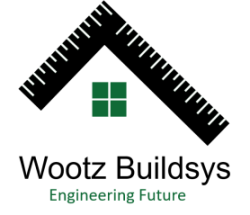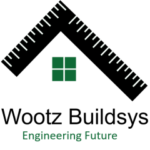Today’s building world loves pre-engineered steel structures! They’re favored for lots of uses, like business storage spaces or your home’s garage. Compared to the usual building ways, these steel structures give loads of pluses. Thinking of building something? Checking out the options? Pre-engineered steel buildings could be your dream ticket.
What Are Pre Engineered Steel Buildings?
Pre-engineered steel buildings (PEBs) are structures that are designed and fabricated in a factory before being shipped to the construction site for assembly. These buildings use steel frames and pre-fabricated components, making them both versatile and efficient. They are often utilized for industrial, commercial, and agricultural purposes but are also becoming increasingly popular for residential use.
1. Cost-Effectiveness
Lower Initial Costs
One of the most compelling reasons to choose pre engineered steel buildings is their cost-effectiveness. The use of prefabricated components significantly reduces labor costs and construction time. Since most of the fabrication occurs in a controlled factory setting, the likelihood of costly on-site errors is minimized.
Reduced Maintenance Costs
Steel is highly durable and resistant to common issues like termites, rot, and warping. This durability means that pre engineered steel buildings typically require less maintenance over their lifespan compared to traditional wood or masonry structures. Lower maintenance translates to reduced long-term costs, making steel buildings a financially sound investment.
2. Faster Construction Time
Quick Assembly
Pre engineered steel buildings are known for their rapid construction timeline. Because the majority of the components are pre-fabricated, on-site assembly is streamlined. This quick assembly not only accelerates project completion but also reduces labor costs and minimizes disruptions.
Predictable Project Timelines
With pre engineered steel buildings, project timelines are more predictable. The controlled manufacturing process ensures that materials are ready to be assembled upon arrival, avoiding common delays associated with traditional construction methods.
3. Design Flexibility
Customizable Layouts
Pre engineered steel buildings offer extensive design flexibility. They can be customized to meet specific requirements, including varying sizes, shapes, and configurations. This adaptability allows for a wide range of applications, from expansive warehouses to compact storage units.
Future Expansion
The modular nature of pre engineered steel buildings makes them ideal for future expansion. Additional sections or modifications can be easily added without major disruptions, accommodating changing needs or business growth.
4. Energy Efficiency
Insulation Options
Pre engineered steel buildings can be equipped with various insulation options to improve energy efficiency. Insulated panels and reflective coatings help maintain a stable indoor temperature, reducing heating and cooling costs.
Sustainable Materials
Steel is 100% recyclable, making it an environmentally friendly choice. By opting for pre engineered steel buildings, you contribute to sustainability and reduce your carbon footprint. Additionally, many steel manufacturers use recycled content in their products.
5. Durability and Strength
Weather Resistance
Steel buildings are renowned for their strength and resilience. They can withstand harsh weather conditions, including heavy snow, strong winds, and seismic activity. This durability ensures that your building remains intact and functional in various environmental conditions.
Structural Integrity
Steel’s high strength-to-weight ratio means that pre engineered steel buildings have superior structural integrity. This ensures that the building can handle large loads and stresses without compromising safety.
6. Low Environmental Impact
Sustainable Construction Practices
The prefabrication process of steel buildings reduces on-site waste and minimizes the environmental impact of construction. With precise manufacturing, there is less material waste compared to traditional building methods.
Recyclable Materials
Steel is one of the most recyclable materials available, which means that pre engineered steel buildings contribute to a circular economy. When the building reaches the end of its life cycle, the steel can be recycled and repurposed, reducing landfill waste.
7. Enhanced Safety
Fire Resistance
Steel is inherently fire-resistant, which enhances the safety of pre engineered steel buildings. Unlike wood, steel does not burn or contribute to the spread of flames, providing additional protection for occupants and property.
Stability and Safety
The robustness of steel construction offers superior stability, reducing the risk of structural failures. This stability contributes to a safer building environment and peace of mind for occupants.
Conclusion
Pre engineered steel buildings offer numerous advantages, including cost-effectiveness, faster construction times, design flexibility, energy efficiency, durability, and low environmental impact. By choosing pre-engineered steel, you invest in a structure that meets modern demands for performance, sustainability, and efficiency. Whether for commercial, industrial, or residential use, pre engineered steel buildings provide a reliable and forward-thinking solution for your construction needs.
FAQ’s Frequently Asked Questions
Q 1: What are pre engineered steel buildings?
Pre-engineered steel buildings are structures designed and fabricated in a factory before being assembled on-site. They use pre-fabricated steel components, which makes them versatile and efficient for various applications, including industrial, commercial, and residential purposes.
Q 2: What are the main cost advantages of pre-engineered steel buildings?
Pre-engineered steel buildings are cost-effective due to lower initial construction costs and reduced labor expenses. The prefabrication process minimizes on-site labor and material waste, leading to significant savings. Additionally, their durability reduces long-term maintenance costs.
Q 3: How does the construction time for pre-engineered steel buildings compare to traditional methods?
Pre-engineered steel buildings generally have a faster construction time compared to traditional methods. Since most components are prefabricated, on-site assembly is quicker and more efficient, reducing overall project timelines.
Q 4: Can pre-engineered steel buildings be customized?
Yes, pre-engineered steel buildings offer extensive design flexibility. They can be customized in terms of size, shape, and layout to meet specific needs and preferences, making them suitable for a wide range of applications.
Q 5: Are pre-engineered steel buildings energy-efficient?
Yes, pre-engineered steel buildings can be energy-efficient. They can be equipped with various insulation options to enhance thermal performance and reduce heating and cooling costs. Additionally, steel’s recyclability contributes to environmental sustainability.


